Mark Anthony Neal's Blog, page 717
July 14, 2015
Trailer: Lila & Eve--Starring Viola Davis + Jennifer Lopez + Directed by Charles Stone III
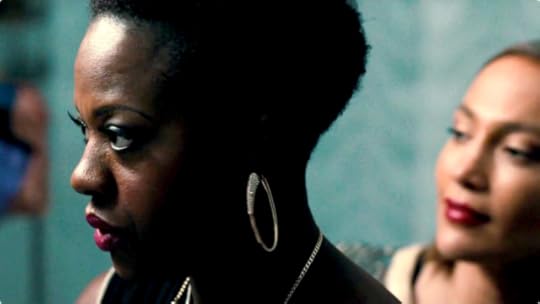 Directed by Charles Stone III (Drumline; Paid in Full) and starring Two-time Academy Award nominee Viola Davis and Jennifer Lopez, Lila & Eve tells the story of "two distraught mothers, whose children were gunned down in a drive-by, team up to avenge their deaths after local authorities fail to take action."
Directed by Charles Stone III (Drumline; Paid in Full) and starring Two-time Academy Award nominee Viola Davis and Jennifer Lopez, Lila & Eve tells the story of "two distraught mothers, whose children were gunned down in a drive-by, team up to avenge their deaths after local authorities fail to take action."
Published on July 14, 2015 21:07
Why Abraham Lincoln Should Be Removed From The Five Dollar Bill by Charles Bane, Jr.
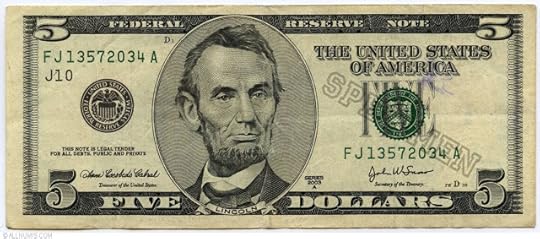 A woman on the $10 bill; sentiment to remove Andrew Jackson from the $20 bill. Poet Charles Bane, Jr. asks, why not take the so called "emancipator" Abraham Lincoln off the $5 bill?
A woman on the $10 bill; sentiment to remove Andrew Jackson from the $20 bill. Poet Charles Bane, Jr. asks, why not take the so called "emancipator" Abraham Lincoln off the $5 bill? Why Abraham Lincoln Should Be Removed From The Five Dollar Billby Charles Bane, Jr. | special to NewBlackMan (in Exile)
At his death, my late father was the nation's leading authority on Lincoln and the law. I revered my father and was awed by his intellect: he was a Rhodes Scholar , a graduate of Harvard Law, and senior partner at Isham, Lincoln and Beale, the firm founded by Abraham Lincoln's surviving child, Robert Todd Lincoln. From my earliest childhood, we were not father and son, but best friends. But he was my father, and I would no more correct a core principle he held closely than rob a bank.
At his retirement, we planned to write together the book he was born to write: a legal biography of the 16th President. We had uncovered new source material to add to the canon: only Jesus of Nazareth has more biographies devoted to him than Abraham Lincoln.
But today, I realize that the unfinished project was a secret blessing, halted by my father's death at eighty-four. I gave his eulogy, and quoted Lincoln, for from my father's company, I was "loathe to close". But my father upheld that Lincoln's view of African Americans was revolutionary, benign and humane, and I know this is not true.
This is a year of symbology: the confederate flag, which was never the banner of the Confederacy but served a post-war purpose as the flag of domestic terrorism by white supremacists was lowered from the capitol grounds in South Carolina. The current Treasury Secretary has announced that a woman will be featured on the ten dollar bill, and there is a strong movement to instead remove the dismal Andrew Jackson from the twenty dollar bill.
The record of Abraham Lincoln's racism is everywhere, like the traffic of animal tracks in his native Kentucky. Never, my father had said, would I ask a witness a question if I didn't already know the answer, and Lincoln answers history's question:
“I will say then that I am not, nor ever have been in favor of bringing about in anyway the social and political equality of the white and black races – that I am not nor ever have been in favor of making voters or jurors of negroes, nor of qualifying them to hold office, nor to intermarry with white people; and I will say in addition to this that there is a physical difference between the white and black races which I believe will forever forbid the two races living together on terms of social and political equality. And inasmuch as they cannot so live, while they do remain together there must be the position of superior and inferior, and I as much as any other man am in favor of having the superior position assigned to the white race. I say upon this occasion I do not perceive that because the white man is to have the superior position the negro should be denied everything.”
Rains come and fill in tracks, especially the deep prints. But trail behind closely and they reappear, and smaller prints as well. The Vespasian Warner Library in Clinton, Illinois has a a 1854 copy of "Types Of Mankind" The authors theorize that "natural order" 'prevents different races from being equal.' There are notes in the margins, carefully attributed by handwriting analysis to Lincoln.
In reality, Abraham Lincoln was the emancipator of Black slaves in a bid , during war, to reunite a slave-holding South and a segregated North. But emancipation deserves an image, like stained glass windows in a church, and if African- Americans had an emancipator it was the man who wrote: "I expose slavery in this country because to expose it is to kill it. Slavery is one of those monsters of darkness to whom the light of truth is death."
It was the relentless prodding of the President by Frederick Douglass that qualifies him as a Great Emancipator, and destroys the myth that emancipation was a gift. It was, instead, a victory in a struggle for equality that African Americans have fought for alone.
+++
Charles Bane, Jr. is a second generation civil rights activist and author of The Chapbook ( Curbside Splendor ) , Love Poems ( Aldrich Press) , and Three Seasons: Writing Donald Hall ( Collection of Houghton Library, Harvard University ). He created and contributes to The Meaning Of Poetry series for The Gutenberg Project. This essay is dedicated to the memory of Charles A. Bane, Sr.
Published on July 14, 2015 07:00
July 13, 2015
Sister Outsider: Black American Women, Identity and Global Travel | Black Potraiture(s) II
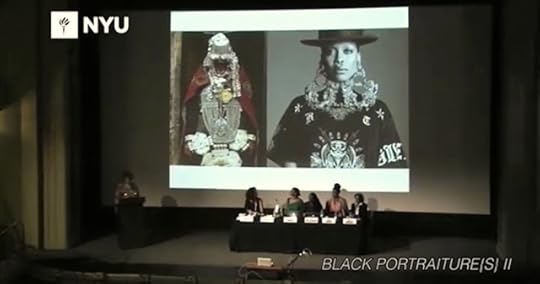 Panelist
Cheryl Finley
+
Shani Jamila
+
Michaela angela Davis
+
Laylah A. Barrayn
+
Asia Leeds
+
Sharon Harley
discuss the intersections Black women, identity and Global travel at
Black Portraiture{s} II: Imaging the Black Body and Re-Staging Histories
held in Florence, Italy.
Panelist
Cheryl Finley
+
Shani Jamila
+
Michaela angela Davis
+
Laylah A. Barrayn
+
Asia Leeds
+
Sharon Harley
discuss the intersections Black women, identity and Global travel at
Black Portraiture{s} II: Imaging the Black Body and Re-Staging Histories
held in Florence, Italy.Sister Outsider: Black American Women, Identity and Global Travel from NYU Photography and Imaging on Vimeo.
Published on July 13, 2015 19:43
Gregory Pardlo--2015 Pulitzer Prize Winner for Poetry--Reads from his Collection 'Digest'
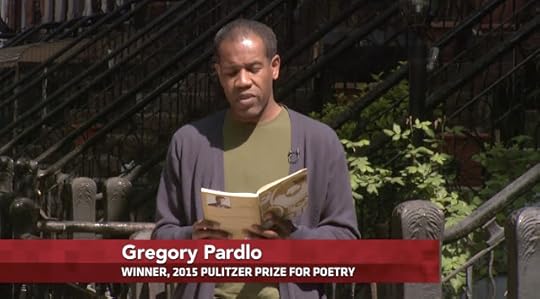 In PBS NewsHour's weekly poem, poet Gregory Pardlo reads 'Written by Himself' from his collection Digest, which won the 2015 Pulitzer Prize for poetry.
In PBS NewsHour's weekly poem, poet Gregory Pardlo reads 'Written by Himself' from his collection Digest, which won the 2015 Pulitzer Prize for poetry.
Published on July 13, 2015 19:14
Outdoor Afro: Busting Stereotypes That Black People Don't Hike Or Camp

With Outdoor Afro, Black folk who enjoy the outdoors are banding together to encourage more people of color to connect with nature and each other.
Published on July 13, 2015 14:18
Not Breathing Easy: Robert Glasper, Terence Blanchard & the Jazz Tradition of Protest by Mark Anthony Neal
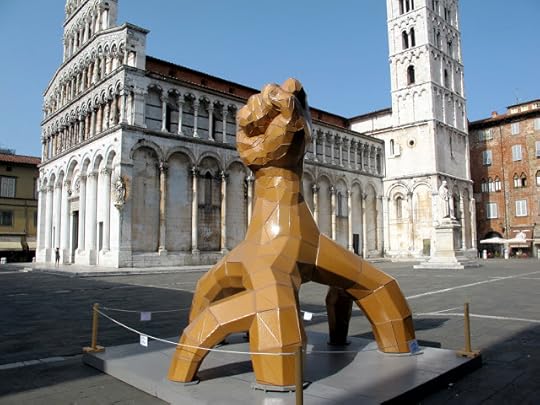 Andrew F. Scott, Cartasia 2012Not Breathing Easy: Robert Glasper, Terence Blanchard & the Jazz Tradition of Protestby Mark Anthony Neal | @NewBlackMan | NewBlackMan (in Exile)
Andrew F. Scott, Cartasia 2012Not Breathing Easy: Robert Glasper, Terence Blanchard & the Jazz Tradition of Protestby Mark Anthony Neal | @NewBlackMan | NewBlackMan (in Exile)Generations ago, Jazz musicians were still a vital part of Black urban communities, so much so that Jazz music was viewed as the music of a revolutionary vanguard during the Black liberation movement of the 1960s. Now as Hip-hop artists are held to the highest, and perhaps, unprecedented, standards of accountability to speak for and to the people, Jazz’s long tradition of playing such a role has been marginalized. New recordings from Robert Glasper and Terence Blanchard attempt to re-center Jazz as a space where the aesthetics of protest and subversion are both valued and accessible.
The reasons for Jazz music’s dislocation from the center of Black social life are complex; scholars and musicians have long grappled with this issue, but what seems clear, is that Jazz is generally interpreted as the music of an older, middle-class audience that is more often White than Black.
In the last generation, a group of young Black musicians, who were raised on the beats and rhymes of Hip-Hop, have with varying degrees of success tried to marry the impulses of jazz with the expectations of Hip-Hop. Though the early experimental work of folk like MacArthur Genius Steve Coleman, Greg Osby (3D Lifestyles), Cassandra Wilson, who is featured on The Roots’ Do You Want More?!!!??! and even Branford Marsalis (Buckshot LeFonque) have largely been forgotten, artist such as Roy Hargrove (The RH Factor) and perhaps, most famously Robert Glasper have remained in conversation with Hip-Hop, and thus the idea of a vibrant Black public.
Glasper’s own commercial trajectory can be tied to his recent Black Radio projects, which essentially met Black music audiences, where they are: on mainstream, corporate, terrestrial radio stations; Such efforts earned him a two Grammy Awards in the R&B category.
For Covered, his new album recorded live at Capitol Studios, Glasper ironically returns to his roots in the form of the trio featuring Vicente Archer (Bass) and Damion Reid (drums) that appeared on his first two recordings Canvas (2002) and In My Element (2005). Having garnered a broader audience, including his recent appearance on Kendrick Lamar’s To Pimp a Butterfly and on-going collaborations with “4th” trio member Bilal, Glasper’s move back to the trio, and with a live recording, seems a blatant attempt to take audiences somewhere else. Yet, Glasper wisely chooses to interpret tracks from Black Radio, as well as other so-called pop-recordings (and a standard or two) to maintain a common ground with his audience.
Solid R&B tracks like “I Don’t Even Care” (which originally featured Macy Gray and Jean Grae), Jhené Aiko’s “The Worst” and Musiq Soulchild’s “So Beautiful” are given a new sheen of gravitas in the hands of the trio, recalling the work of the late Joe Sample on his stellar Invitation (1993). Indeed the trio’s treatment of “So Beautiful” highlights one of R&B’s best kept secrets: Musiq Soulchild’s strength as one of the best R&B ballad composers of the last generation.
The Glasper trio’s covers of Joni Mitchell’s “Barangrill” or Radiohead’s “Reckoner” also highlight Glasper broadly tuned ears for melody--both stand nicely alongside Black Radio’s “Letter to Hermione” (David Bowie) and the stunning cover of “Seems Like Teen Spirit.”
Covered though finds its contemporary grounding in the closing suite, which features a rendition of Bilal’s “Levels,” a new and woefully brief spoken-word collaboration with Harry Belafonte and a moment-defining cover of Kendrick Lamar’s “I’m Dying of Thirst.”
Bilal’s afrofuturistic “Levels” is literally brought back down to earth and into the present via Glasper’s trio, eliding the impulses of imagining beyond this moment with the urgency of this moment. The sonic space that “Levels” creates, logically offers a glimpse into a past/present of Blackness with “Got Over” where Harry Belafonte (in just over two minutes), provides brief context into a career of defiant vision, that at once indexes his genius and highlights the everydayness of who he is/was. As Belafonte simply states, “I’m one the ones of color who got over; I’m one of the ones the bullet missed.”
The album closes with Glasper’s treatment of Kendrick Lamar’s “I’m Dying of Thirst,” perhaps providing a response to the first part of Lamar’s original couplet, “Will you sing about me?” And sing they do, as the voices of young children remember out loud those spirits that have been lost in this particular moment of assault on Black bodies. Like the generation that came of age with the image of a brutalized Emmett Till and Mamie Till Mobley’s refusing to allow them to forget, the young folk featured on Covered will find their inspirations in the names--oh so many--that they will also refuse to forget.
The first of those names uttered is Eric Garner, and it is the late Garner, who was choked to death by New York City Police officers, that is the direct inspiration for Terence Blanchard’s new recording Breathless.
Often overshadowed by the prominence of fellow NOLA musicians Wynton Marsalis, Branford Marsalis and Harry Connick, Jr., Blanchard, a five-time Grammy winner, has had a rather remarkable career beginning with his early apprenticeship with Art Blakey, his 1980s-era band with saxophonist Donald Harrison, his own career as a leader and his work scoring dozens of films, working most often with filmmaker Spike Lee.
Like Glasper, Blanchard meets audience where they are, creating a jazz/funk soundtrack for the moment of #BlackLivesMatter. Breathless opens with a cover of Eugene McDaniels’ classic “Compared to What?,” which was originally recorded by Roberta Flack on her debut First Take (1969) and made famous when Les McCann and Eddie Harris recorded a live version at the Montreux Jazz Festival in 1969.
“Compared to What?” features vocals from fellow NOLA musician and sometime Maroon 5 collaborator PJ Morton, who also contributes vocals to “Shutting Down” and an amazing cover of Hank Williams Sr.’s “Ain’t Got Nothing But Time.” The Morton tracks are standouts, as is the recordings sprawling aesthetic centerpiece, pianist Fabian Almazan’s “Everglades” which clocks in at over fourteen minutes.
The cover art for Blanchard’s Breathless features work from Andrew F. Scott‘s Black Man Grove: Resilience series, and in the examples of Glasper’s Covered and Breathless, resilience is a fitting metaphor for the ability of Jazz to again speak to the crises and possibilities at hand.
+++
Mark Anthony Neal is Professor of African & African American Studies at Duke University in Durham, NC and the host of the weekly video webcast Left of Black. Neal is the author of several books including Soul Babies: Black Popular Culture and the Post Soul Aesthetic (2002) and Looking for Leroy: Illegible Black Masculinities (2013); Follow him on Twitter at @NewBlackMan.
Published on July 13, 2015 10:54
Are Police Officers a "Special Class" Exempt from Normal Criminal Procedures? The Cleveland 8 Letter of Support of Tamir Rice
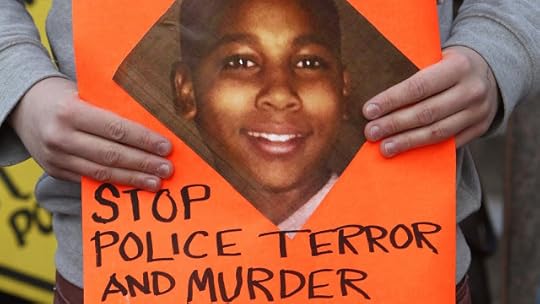 The Cleveland 8 issue an Open Letter urging Cleveland Municipal Court
Judge Ronald Adrine
to issue arrest warrants for the two Cleveland police officers responsible for the shooting death of Tamir Rice. On July 9 The Cleveland 8 filed citizen affidavits requesting that the 8th District Court of Appeals force Judge Adrine to issue the warrants; their request was denied.
The Cleveland 8 issue an Open Letter urging Cleveland Municipal Court
Judge Ronald Adrine
to issue arrest warrants for the two Cleveland police officers responsible for the shooting death of Tamir Rice. On July 9 The Cleveland 8 filed citizen affidavits requesting that the 8th District Court of Appeals force Judge Adrine to issue the warrants; their request was denied.
Published on July 13, 2015 06:55
Atticus Finch's' Halo Comes Apart In 'Go Set a Watchman'
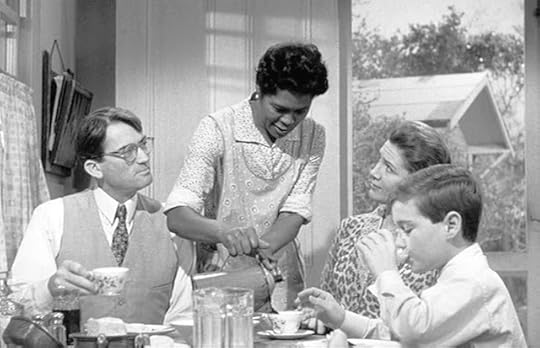 In Harper Lee's new book, Go Set a Watchman, the "beloved" Atticus Finch is a racist. NPR's Lynn Neary talks with Fresh Air book critic Maureen Corrigan.
In Harper Lee's new book, Go Set a Watchman, the "beloved" Atticus Finch is a racist. NPR's Lynn Neary talks with Fresh Air book critic Maureen Corrigan.
Published on July 13, 2015 05:20
July 12, 2015
Pimp My Piragua by Miguel Luciano (Installation from 2008)
 'Pimp My Piragua
(2008) is a mobile public art project by
Miguel Luciano
that commemorates the innovations of Latino street vendors, transforming a traditional pushcart for selling shaved ice (Piraguas) into a hyper-modified pushcart-tricycle with a hi-fi sound and video system.'
'Pimp My Piragua
(2008) is a mobile public art project by
Miguel Luciano
that commemorates the innovations of Latino street vendors, transforming a traditional pushcart for selling shaved ice (Piraguas) into a hyper-modified pushcart-tricycle with a hi-fi sound and video system.' Pimp My Piragua from Queens Museum on Vimeo.
Published on July 12, 2015 10:58
July 11, 2015
"Hangin' Out in Church: a Hak-ku" by Hakim Bellamy
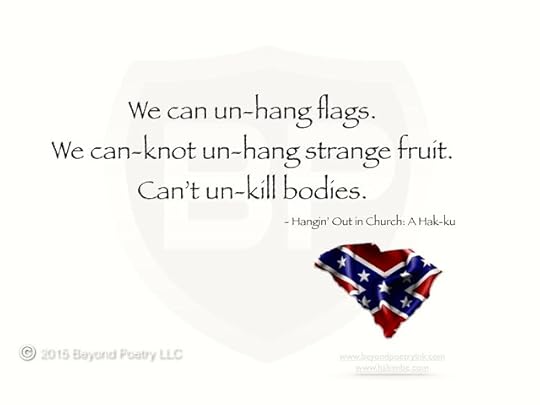
As the inaugural Poet Laureate of Albuquerque, NM (2012-2014), Hakim Bellamy is a national and regional Poetry Slam Champion, and holds three consecutive collegiate poetry slam titles at the University of New Mexico. Follow him on Twitter at @HakimBe
Published on July 11, 2015 15:49
Mark Anthony Neal's Blog
- Mark Anthony Neal's profile
- 30 followers
Mark Anthony Neal isn't a Goodreads Author
(yet),
but they
do have a blog,
so here are some recent posts imported from
their feed.



